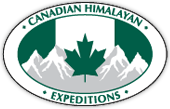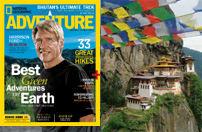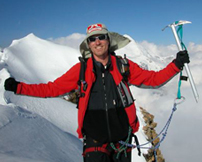FAQs
When hiking, how far will I walk each day?
In the mountains, we measure hikes in hours rather than miles. Usually, we walk 3 to 3 1/2 hours in the morning, and the same in the afternoon. The terrain and altitude determines our actual distance covered. We like to keep flexible (although we’re pretty adamant about nice, long lunches with hearty and delicious foods), and we encourage trekkers to discover their own comfortable pace. There’s no need to “keep up” with the others. There is always an assistant guide instructed to keep pace with the last person in the group no matter how leisurely their walk. Our feeling is: take time to enjoy your spectacular surroundings!
What clothing should I bring?
You probably have most things you need already. We suggest ‘layered’ clothing for greater flexibility. In the mornings and evenings it is usually cool. During the day while walking it can get quite warm. So you will be adding on and stripping off layers accordingly. We suggest a combination of loose fitting pants (or skirts for women), T-shirts, long and short sleeved shirts, polypropylene long underwear (which can be worn with shorts), a “fleece” jacket and a good waterproof windbreaker, preferably made with “breathable” Gore-Tex fabric. For footwear we recommend a medium to lightweight hiking boot which has a good tread and provides some support around your ankles. When you sign up for a trip we’ll send you a detailed list of the clothing and gear you need for your trip.
What are the accommodations like?
We use very comfortable, centrally located hotels when we’re in major cities. All have rooms with private shower or bath and hot running water, international phones and fax, laundry service, restaurants, money changing facilities, and sometimes — swimming pools! Our preference is for hotels with local character, charm or historical significance. Forget about the ‘Hilton’. Wherever possible, we like to integrate our travellers into the feel of the country, and avoid the cultural isolation which can occur with ‘group’ travel.
When in smaller towns we stay at simple but friendly guest houses. They’re low on modern conveniences, but they’re clean and have toilet and bathing facilities in each room. Usually while trekking and on safari, you sleep in large A-frame two person tents which have foam mattresses and ample room for two “happy campers” and their gear.
How fit do I have to be?
If you’re reasonably active and in good health you’ll enjoy most of our trips. Different adventures have different grades of difficulty, but one of our trips is bound to match your ability. For trekking trips, the fitter you are the more likely you are to enjoy the walking. We therefore recommend you start on a “training program” before departure. Going on day-hikes or long brisk walks is an ideal form of preparation. Cross-country skiing, swimming, cycling, or jogging are all excellent as well. Even walking up and down stairs is a convenient way to prepare for the hills.
The beauty of our trips is that they are both physically demanding, and sometimes emotionally and mentally challenging. When the unexpected arises, a positive mental attitude is the prime qualification for adventure fun. Age really isn’t that important. We’ve taken 11 year olds and seniors on strenuous, high altitude treks in the Himalayas.
What about toilet facilities when in remote areas?
Don’t worry. On most of our camping trips we bring a portable toilet tent which is erected in an appropriate spot at each campsite. In some areas the campsites have permanent toilet and bathing facilities. And if we’re camping in a village we can use the facilities in the local tea houses or lodges. When we’re on the move, discrete forays behind bushes, large rocks, or trees well-off the trail is the best policy. All stools must be buried and toilet paper is either burned on the spot, or carried to camp in a zip-lock bag for disposal.
How do I keep clean?
Although one should expect to rough it and be a little dirty on occasion, there are a number of different ways to maintain personal hygiene. Bowls of warm washing water for ‘bird baths’ are always available in camp. We often have a portable “solar shower”, but these are sometimes more trouble than they’re worth. Using camp water, streams and rivers is usually the best way to go, making sure you use biodegradable soap and allow the waste water to filter through the soil, a good distance from the stream. Many travellers have found carrying ‘wet wipes’ really useful in a lot of situations! You will always be provided with hand washing water and soap before meals.
What are the meals like?
It’s safe to say you’ll be amazed at how delicious everything tastes. Our camp cooks are experts at making interesting and varied dishes in what are sometimes very trying circumstances. Meals are always plentiful and nutritious, combining local foods and specialties with some western fare. Vegetarians are easily accommodated. We are of the firm belief that healthy people are happier — so the utmost concern is given to hygienic food preparation. Fresh vegetables and fruits are soaked in potassium permanganate or iodine solution, and all drinking water is purified by our staff.
What’s it like to trek at high altitude?
A once in a lifetime experience. The scenery is spectacular. It’s like being on the roof of the world. Spiritually, well, everyone has their own experience. But many say they feel like they’ve been lifted to a higher consciousness. Astronauts circling the earth report how the image of our globe far below, forever changes the way they look at the world. For some, high altitude trekking is similar. Being exposed to such a phenomenal scale creates a mystical awareness of the majesty of our planet.
Above 10,000 feet, some people feel mild symptoms associated with decreased oxygen levels: a small headache, some loss of appetite, a slight feeling of malaise. But the human body has great adaptive abilities. By walking at a leisurely pace, drinking lots of water, and protecting yourself from the sun, most of these symptoms either never appear, or go away with a good night’s rest. The trek itineraries are designed specifically to minimize the chance of any altitude problems, and our experienced leadership is there to make sure all goes well. Should anyone begin to develop significant symptoms of altitude sickness, we have them escorted by a staff member down to the altitude at which they last felt well (usually the previous night’s camp), and they’re fine.
Is it safe for me to travel in that country?
Yes. In the over eighteen years we’ve been operating adventure trips — the worst thing that’s happened is some minor theft. It’s probably safer trekking in the Himalayas or on a wildlife safari in Africa, than living in the North American city you reside in now. We pride ourselves on our knowledge of the areas we visit. Our local contacts closely monitor situations which could adversely affect our trip. If we feel there is a real safety threat, we do not hesitate to cancel or reroute. However, one of the nice things about our trips is that most of the time we’re far away from the big cities where most troubles occur.
What is the weather like?
We schedule all of our trips to coincide with the best all-around weather seasons. However, mother nature always has the final say and you must be prepared for a variety of weather conditions, warm or cold, rain or shine. On our treks safaris and adventures, temperatures vary depending on the altitude, but usually it’s sunny and warm during the day (even in the Everest valley!), and colder at night. In low altitude areas it is normally quite hot during the day and warm at night… bring your swimsuit!
Can I go early or stay longer?
The trips begin and end in major cities on the dates listed. Should you wish to arrive a couple of days early, or stay on after the trip, we can easily arrange extra nights hotel accommodation. Reasonably good mid-range hotels generally cost anywhere from US$30 – $95 per night. The trip extensions noted here can usually precede or follow a group trip.
Please feel free to call us for more information! You can also go to your public library or local travel book shop and get one of the many travel guides published by such organizations as The Lonely Planet or Insight Guides. They have good general descriptions on all of our destinations.




